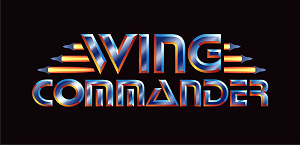
Wing Commander is a media franchise consisting of space combat simulation video games from Origin Systems, Inc., an animated television series, a feature film, a collectible card game, a series of novels, and action figures. The franchise originated in 1990 with the release of video game Wing Commander.
TekWar is a series of science fiction novels created by Canadian actor William Shatner and ghost-written by American writer Ron Goulart, published by Putnam beginning in October 1989. The novels gave rise to a comic book series, video game, and later TV movies and a series, both of the latter featuring Shatner.

Capstone Software was a subsidiary of IntraCorp, a Miami-based computer and video game company. Founded in 1984, Capstone created first-person games such as Corridor 7: Alien Invasion, Operation Body Count, William Shatner's TekWar and Witchaven, and is also known for releasing games based on movie/TV licenses. Capstone's first-person games used the Wolfenstein 3D engine, and later, the Build engine.
IntraCorp was a game publisher based in Miami, Florida, founded in 1984. The company faced bankruptcy in 1996, leading to its closure along with their main subsidiary, Capstone Software. IntraCorp was involved in the development and publication of games spanning various genres.

Witchaven is a dark fantasy first-person shooter video game developed by Capstone Software and published by Intracorp Entertainment in 1995. Its sword-and-sorcery themed story tasks the knight Grondoval with a quest to seek out and destroy a lair of witches in their titular fortress, fighting hordes of hostile monsters along the way. Witchaven features action role-playing elements such as leveling, as well as an emphasis on melee combat. Its code was based upon an early version of the nascent Build engine. The game received overall mixed reviews, such as praise for its atmosphere and gory combat, but criticism for some aspects of gameplay. It was followed by a sequel titled Witchaven II: Blood Vengeance in 1996.

Terra Nova: Strike Force Centauri is a 1996 tactical first-person shooter video game developed and published by LookingGlass Technologies. Set in a science-fictional depiction of the 24th century, the game follows a faction of humans who colonize the Alpha Centauri star system to escape from the Hegemony, a totalitarian Earth government. The player assumes the role of Nikola ap Io, the leader of an Alpha Centauri military unit, and undertakes missions against pirates and the Hegemony.

Witchaven II: Blood Vengeance is a fantasy-themed first-person shooter for DOS compatible operating systems released in 1996 by Capstone Software. It is a sequel to 1995's Witchaven. Both games use the Build engine. It was Capstone's last proprietary game before they and their parent company Intracorp went bankrupt. In Witchaven II, the player controls the returning knight Grondoval, the hero of the first game, as he is trying to stop an evil witch from carrying a titular blood vengeance in revenge for him having slain her sister in the original game. It received generally negative reviews, with criticism directed at its controls, enemy AI, and general mediocrity as compared to other first-person shooters coming out at the time. The game is supported by the BuildGDX source port.

Contra: Hard Corps, released as Contra: The Hard Corps in Japan and Probotector in Europe and Australia, is a run and gun video game released by Konami for the Sega Genesis in 1994, making it the first game in the Contra series released for a Sega platform.

Crime Patrol is a live-action LaserDisc video game released by American Laser Games in 1993. American Laser Games released a sequel, Crime Patrol 2: Drug Wars later that year.
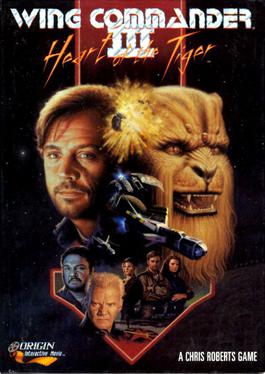
Wing Commander III: Heart of the Tiger is the third main game in Chris Roberts' Wing Commander science fiction space combat simulation video game series, developed and released by Origin Systems in December 1994. It was a departure from previous games in the series in that it uses extensive live action full-motion video to add an interactive movie-style presentation to the space combat gameplay, emphasized by its advertising slogan, "Don't watch the game, play the movie!". The game's more than two hours of video featured a number of prominent movie stars including Mark Hamill as Colonel Christopher "Maverick" Blair, Malcolm McDowell as Admiral Tolwyn, John Rhys-Davies as James "Paladin" Taggart and Thrakhath nar Kiranka, and Tom Wilson as Todd "Maniac" Marshall.
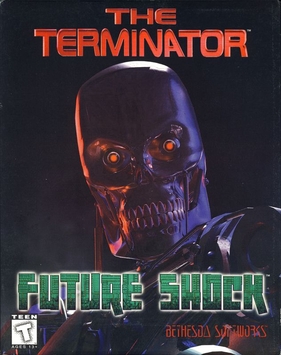
The Terminator: Future Shock is a first-person shooter video game based on The Terminator fictional universes developed and published by Bethesda Softworks in 1995. A sequel, Skynet, was released in 1996.

TekWar is a television series, based on the TekWar novels ghost-written by Ron Goulart from outlines by William Shatner and developed for television by Stephen Roloff. The series follows Jake Cardigan, a former police officer turned private investigator working for Cosmos, a private security firm owned and operated by Walter Bascom.

Star Wars Jedi Knight: Mysteries of the Sith is an expansion pack for the 1997 first-person shooter Star Wars Jedi Knight: Dark Forces II, developed and published by LucasArts for Microsoft Windows in 1998. It was re-released on Steam in September 2009. The expansion includes a new single-player story mode and fifteen multiplayer maps. The single-player story, set in the fictional Star Wars expanded universe five years after the events of Dark Forces II, follows both returning protagonist Kyle Katarn, a Jedi Master and mercenary working for the New Republic, and Mara Jade, a character featured in numerous Star Wars expanded universe works, who is being trained by Katarn in the Jedi arts. After Katarn goes missing while investigating an ancient Sith temple, Jade continues her studies on her own while undertaking missions from the New Republic, eventually leaving to find Katarn.

Hyperdimension Neptunia mk2 is a 2011 role-playing video game developed by Idea Factory and Compile Heart, with assistance from Nippon Ichi Software, Gust Corporation, 5pb., and the recently founded company Comcept by Keiji Inafune. It is the sequel to the previous game named Hyperdimension Neptunia, announced on April 12, 2011 for the PlayStation 3, as the second installment in the Hyperdimension Neptunia franchise, and is followed by Hyperdimension Neptunia Victory. It was released on August 18, 2011 in Japan, and was released in February 2012 in the United States and Europe. This is the first and so far only game in the series to receive a Mature rating from the ESRB in North America. The sequel contains both new and returning characters, and the gameplay has been updated so as to remove the random encounter feature. New maps and a brand new world feature as well, and the cutscenes have been upgraded from the old 2D visual novel style cutscenes. Hyperdimension Neptunia mk2 was made available as a downloadable title on the PlayStation Network in August 2012.
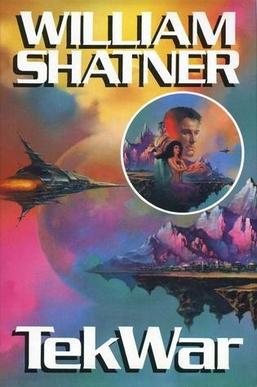
TekWar is a science fiction novel written by William Shatner, assisted by (uncredited) science fiction author Ron Goulart. It was first published by G. P. Putnam's Sons in October 1989. TekWar is the first of nine novels, and created an entire TekWar franchise, which includes the TekWorld comic book series, the video game William Shatner's TekWar, the TekWar TV series, and several related TV movies, including TekLords.

Rocketbirds: Hardboiled Chicken is a platform adventure game created and developed by Ratloop for Microsoft Windows, PlayStation 3, and PlayStation Vita. OS X and Linux ports were later released in September 2013 as part of Humble Bundle, followed by the PlayStation 4 version in November 2020. A remake of the 2009 Flash game Rocketbirds: Revolution!, Hardboiled Chicken is a cinematic adventure game with full single and co-op campaigns and stereoscopic 3D support.
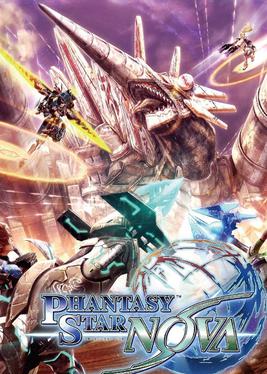
Phantasy Star Nova is a video game for the PlayStation Vita developed by tri-Ace as an installment of the Phantasy Star game series. It was released on November 27, 2014 in Japan, while a Chinese-language version was released throughout Asia on March 26, 2015.

Resident Evil Survivor 2 – Code: Veronica is a light gun shooter video game developed and published by Capcom as part of the Resident Evil series. The arcade version was developed in conjunction with Namco for the arcade machines. The game was released for Sega NAOMI and PlayStation 2. It was released on the PlayStation 2 on November 8, 2001 in Japan and in Europe on March 22, 2002. Whilst the Playstation 2 release is a light gun shooter, the NAOMI arcade release features no lightgun technology whatsoever, instead deferring control of each player entirely to a three-axis joystick in the shape of a gun. The game is the second instalment in the Gun Survivor series and the sequel to Resident Evil Survivor. The game is adapted from Resident Evil – Code: Veronica and features enemies and characters from that game, and enemies from Resident Evil 2 and 3. It was followed by Dino Stalker which is a spin-off of Dino Crisis, and has no ties to Resident Evil.

Super Hero Generation is a tactical role-playing game produced by Bandai Namco Games that features characters from the Kamen Rider, Ultraman and Gundam, three iconic Japanese TV series. Released for the PlayStation 3 and PlayStation Vita in Japan on October 23, 2014, Super Hero Generation has many similarities to the Super Robot Wars series, also produced by Bandai Namco.

















